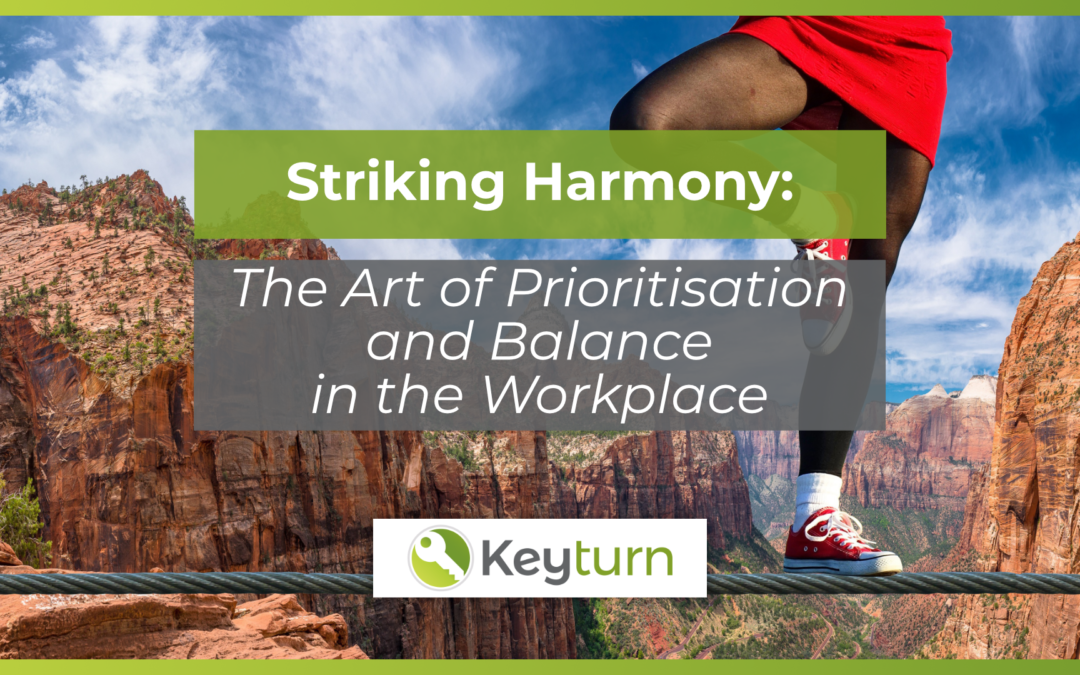Striking Harmony: The Art of Prioritisation and Balance in the Workplace
The demands on our time and energy can seem endless. Between meetings, emails, project deadlines, and unexpected emergencies, maintaining a sense of balance often feels like a juggling act. However, mastering the art of prioritisation and balance is not only crucial for productivity but also for maintaining well-being and job satisfaction. Here’s how you can strike that harmonious balance in your professional life.
The Importance of Prioritisation
Prioritisation is about making informed decisions on where to focus your efforts. Without it, you can easily find yourself overwhelmed by the sheer volume of tasks. Here’s why prioritisation is vital:
- Enhanced Productivity – When you prioritise effectively, you allocate your resources—time, energy, and attention—where they are most needed. This means tackling high-impact tasks that drive significant results.
- Reduced Stress – By clearly defining what’s important, you can reduce the anxiety that comes from feeling pulled in too many directions. Knowing your priorities helps you say no to less critical tasks without guilt.
- Improved Decision-Making – A clear understanding of your priorities aids in making faster and better decisions. When you know what’s important, you can quickly assess what aligns with your goals and what doesn’t.
Achieving Balance
Balance in the workplace is about managing your professional responsibilities while maintaining your personal well-being. Here’s why balance is essential:
- Preventing Burnout – Maintaining a balance between work and personal life helps prevent burnout. Overworking leads to exhaustion and decreased productivity over time.
- Enhanced Creativity and Innovation – A balanced lifestyle fosters a fresh perspective. Time away from work can inspire creativity and innovative solutions that you might not discover when you’re always “on.”
- Increased Job Satisfaction – When you achieve a healthy balance, you’re more likely to enjoy your work and feel satisfied with your job. This satisfaction translates into higher motivation and better performance.
Strategies for Prioritisation and Balance
- Create a Prioritisation Matrix – A prioritisation matrix, such as the Eisenhower Box, helps you categorise tasks based on urgency and importance. This tool aids in distinguishing between critical tasks, those that can be delegated, and those that can be deferred or dropped.
- Set Clear Goals and Boundaries – Define your short-term and long-term goals. Establish clear boundaries between work and personal time. This can mean setting specific work hours and sticking to them, ensuring you have dedicated time for rest and leisure.
- Use Time Management Tools – Utilise tools like calendars, task lists, and project management software to organise and track your tasks. Tools such as Trello, Asana, or even simple to-do lists can help keep you on track and ensure nothing falls through the cracks.
- Practice Mindfulness and Reflection – Take time to reflect on your workload and how you’re managing it. Mindfulness practices, such as meditation or journaling, can help you stay grounded and focused. Regular reflection helps in adjusting your priorities as needed.
- Delegate Effectively – Learn to delegate tasks that don’t require your direct involvement. Trusting your team with responsibilities not only lightens your load but also empowers them and builds a collaborative environment.
- Regularly Review and Adjust – Regularly review your priorities and balance. The workplace is dynamic, and your priorities may shift. Adapting to these changes ensures you stay focused on what’s most important.
Action Points
To implement prioritisation and balance in your workplace, consider these actionable steps:
- Identify Your High-Impact Tasks: List your tasks and identify those that have the most significant impact on your goals. Focus on these first.
- Set Daily and Weekly Goals: Break down your larger goals into manageable daily and weekly tasks.
- Establish Boundaries: Define your work hours and stick to them. Ensure you have time for personal activities and rest.
- Use Technology Wisely: Leverage productivity tools to organise and streamline your tasks.
- Schedule Breaks: Incorporate regular breaks into your day to recharge. Short breaks can significantly enhance focus and productivity.
- Reflect Weekly: At the end of each week, reflect on what worked well and what didn’t. Adjust your approach accordingly.
By embracing these strategies, you can cultivate a workplace environment where prioritisation and balance thrive, leading to enhanced productivity, well-being, and job satisfaction. Remember, achieving harmony is an ongoing process, but with mindful practice, it is certainly attainable.
If you need further support, Keyturn are here to help. Please contact us on learning@keyturn.co.uk or call us on 01788 815500.
Find out more about Keyturn and how we can assist you in your management and leadership development:
Learn more:
Would you like to speak to someone with regards to your training needs?
We’re thrilled to offer you the opportunity to book a no-obligation telephone call appointment with us. Whether you have questions about our services, want to explore collaboration opportunities, or seek expert advice, we’re here to help. Simply select a convenient time from our user-friendly Calendly app, and our team will reach out to you at the scheduled time. It’s a hassle-free way to connect and discuss your needs without any commitments. We look forward to speaking with you and providing the assistance you need. Don’t hesitate, book your appointment now!

